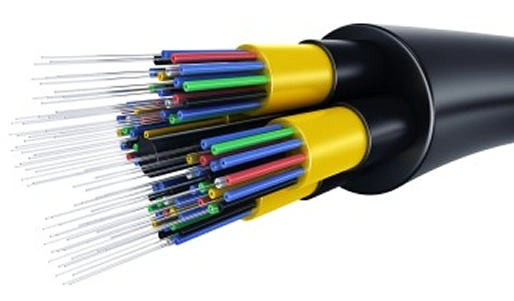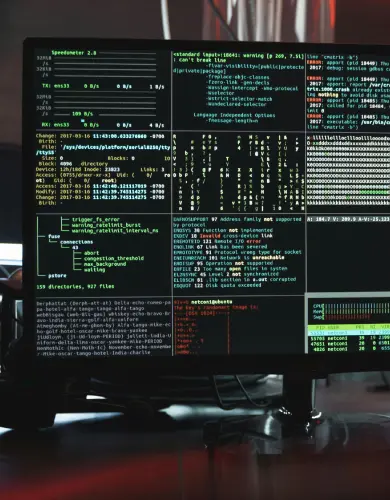Business fibre optic broadband
The world of internet connectivity is changing rapidly. For those of us Millennials who grew up in the nineties, the screeching of a dial-up connection is permanently seared into our collective memories.
Those days are long gone. Most of the UK can now benefit from high speed connections brought by fibre optics. Here’s our complete guide to fibre optic broadband.
What is a fibre optic broadband connection?
Fibre optic broadband is a high-speed internet connection that uses optical fibres to send and receive data from the internet.
Openreach, Britain’s biggest telecoms infrastructure provider, aims to roll out fibre optics to 25 million homes by December 2026.
Fibre optic broadband will dramatically increase the speed and reliability of internet connection that homes and businesses rely on. Look at the progress of ultrafast fibre broadband in your area with Openreach’s interactive tool.
How does fibre optic broadband work?
To best describe how fibre optic broadband works, it’s worth remembering what an internet connection actually is. Internet connections allow your devices to interact with the wider internet by sending and receiving data packets.
A fibre optic broadband connection uses fibre optic cables to transmit these data packets. Here’s what a bundle of fibre optic cables looks like:

At the centre of the cable is a thin strand of glass about the diameter of a human hair.
Fibre optic cables transmit packets of data using light signals. A laser sends data at one end of the cable as a series of flashes. Light from the laser travels along the cable by continually reflecting off the walls of the internal walls of the glass fibre.
Light travels really fast in glass (about 125 miles per second), making fibre optic cables the fastest (and lowest latency) type of broadband connection available in Britain.
What are the benefits of fibre optic broadband?
A fibre optic broadband connection significantly upgrades an ADSL broadband connection. Here are the key benefits of fibre optic broadband:
Speed – fibre optic broadband is typically 10 or 20 times faster than a standard copper cable broadband connection. Fast internet allows high-definition streaming of Netflix, high-quality VoIP calls, and no lag when gaming. Fibre optic broadband can provide gigabit internet (speeds of 1,000 Mbps).
Consistent speed – ADSL connections relying on copper cables suffer from lower speeds at peak times when internet traffic in your area is high. Fibre optic lines don’t suffer from traffic jams, providing consistent daily speed.
Reliability – Fibre cables are more reliable than their copper counterparts. Fibre networks have significantly better signal durability than copper, meaning that the infrastructure is less reliant on electricity supply and, therefore, is unaffected by local power cuts.
Faster upload speeds – Traditional ADSL connections are asymmetric (it’s actually what the ‘A’ stands for), meaning that download speeds are significantly higher than upload speeds. Fibre optic cables work both ways equally.
Who provides a business fibre optic broadband service
Here’s a list of Openreach-accredited fibre optic business broadband providers:
- Amvia
- Andrews & Arnold
- Aquiss
- Beaming (Business only)
- BT Business Broadband
- Cerberus Networks
- Claranet (Business only)
- Your Coop Broadband
- Daisy Communications (Business only)
- Digital Wholesale Solutions (Business only)
- Fastnet
- Fibre.net
- FluidOne (Business only)
- Gamma (Business only)
- Giganet
- Gradwell (Business only)
- HighNet Telecoms (Business only)
- ID Net
- Internet Central
- LCC Communications
- Lily (Business only)
- Link Connect (Business only)
- Ogi
- OptaNet (Business only)
- Orbitalnet (Business only)
- Pine Media
- Sempervox (Business only)
- Sky Business Broadband
- Spitfire (Business only)
- Stream Networks (Business only)
- Structured Communications
- SureVoIP (Business only)
- Syscomm
- TalkTalk for Business
- Uno
- Vfast (Home only)
- Vodafone Business Broadband
- Wavenet (Business only)
- Zen
What are the different types of fibre optic broadband?
These types are ranked by speed, from slowest to fastest:
Fibre to the node (FTTN) – This is where fibre optic cables only run as far as a local broadband node, which could be up to a few kilometres from your business property. The journey from the node to your property will use copper cables.
Fibre to the cabinet (FTTC) – This is where fibre optic cables only run as far as your local cabinet (usually in a green box on the street’s pavement). From the cabinet to your property, an FTTC connection will rely on copper cables, significantly decreasing speed.
Fibre to the Premise (FTTP) – This is where fibre optic cables run directly to a commercial property. FTTP is often advertised as Ultrafast Full Fibre Business Broadband. See our complete guide to full fibre business broadband for more details.
Cable (FTTC) – Cable business broadband uses coaxial cables to deliver a high speed fibre-to-the-cabinet service. In the UK, Virgin Media operates the only cable broadband network.
Leased line broadband – Where a dedicated fibre optic cable is used to directly connect a commercial property to the nearest exchange, avoiding shared infrastructure.
💡 FTTP vs FTTC: For an in-depth comparison between the two main types of fibre broadband in the UK, see: FTTP vs FTTC.
How fast is fibre optic broadband?
Most UK properties now have access to some form of fibre optic broadband. However, speeds can vary significantly depending on whether part of the journey is still supported by traditional copper cables or if it is fibre optics in its entirety.
In the case of FTTC, median average speeds remained between 35 and 65 Mbps, which is superior to ADSL but interior to both cable and full-fibre. This is because the fibre optics connection only runs until the cabinet; the rest still relies on the slower electrical signals transmitted through telephony wires.
💡 FTTP: In this case, fibre optic cables reach right into your premises, thus avoiding any ‘traffic jams’ from a change into copper wire. In this case, the main constraint is the broadband speed limit set by your internet provider, who will sell the ‘fast lane’ to users who are willing to pay the highest business broadband prices.
Use our business broadband speed calculator to determine whether you need FTTC or FTTP. Then, compare business broadband deals that meet your criteria to save on costs while meeting performance.
Fibre optic broadband jargon buster
The broadband market comprises many different providers, all of which go to great lengths to advertise their broadband packages. This has resulted in confusing ways to describe a fibre optic broadband connection. Here’s a jargon buster to help interpret the language used:
Ultrafast full fibre broadband – Where a fibre optic cable runs all the way to your property. The formal names for this situation are Fibre to the Home (FTTH) or Fibre to the Premise (FTTP).
Full fibre – Another advertising term some broadband providers use to describe FTTP (Fibre to the property) and FTTH (Fibre to the home) broadband connections. See a detailed article on full fibre business broadband to learn more.
Hyperoptic broadband – An alternative advertising term used by some broadband providers to describe FTTP (Fibre to the property) and FTTH (Fibre to the home) broadband connections. There’s even one broadband provider that calls themselves Hyperoptic business broadband.
Superfast fibre broadband – Where fibre optic cables run to the broadband cabinet on your street, but the connection to your house uses copper cables. The formal name for this situation is Fibre to the Cabinet (FTTC).
GFast Fibre Broadband – Another advertised name for the situation where fibre optic cables run to the broadband cabinet on your street, but the connection to your house uses copper cables. The formal name for GFast Fibre Broadband is Fibre to the Cabinet (FTTC).
Standard broadband – A term typically describing an ADSL connection, a basic broadband connection that only uses the copper cable network.
Fibre optic broadband packages for business
Companies nationwide are upgrading to fibre business broadband deals for faster speeds and improved reliability.
At the Business Broadband Hub, we help small business broadband customers find the best fibre broadband packages.
Fibre optic broadband – FAQs
Our business broadband experts answer commonly asked questions on commercial fibre optic broadband.
Does my fibre optic cable require a phone line?
It depends on the types of fibre optic broadband. FTTC (Fibre to the cabinet) and FTTN (Fibre to the node) connections require a phoneline because the connection into your partially relies on copper phone line cables.
On the other hand, FTTP (Fibre to the property) connections do not require a phone line as the fibre runs from the server to your business broadband router.
Find out more in our guide to business broadband without a landline.

